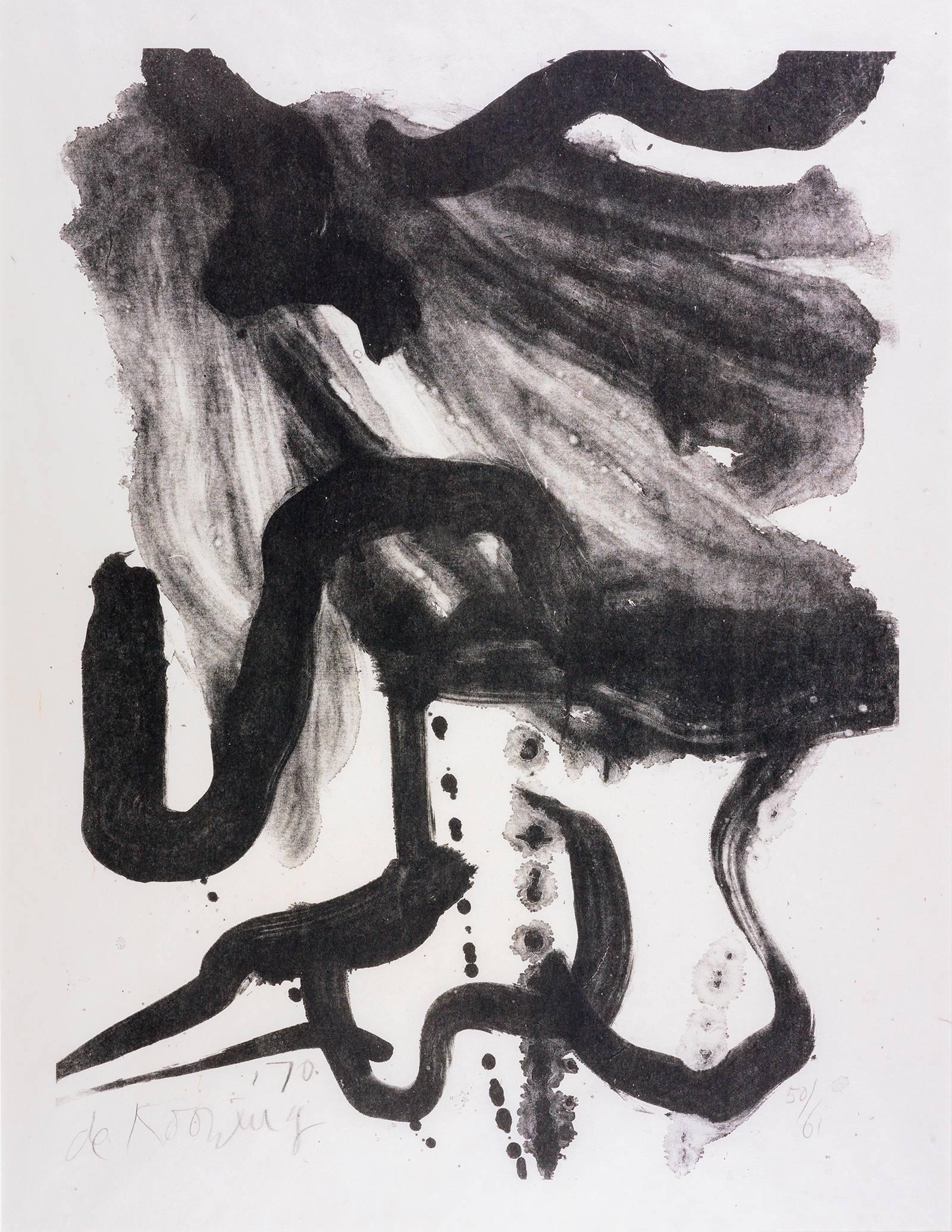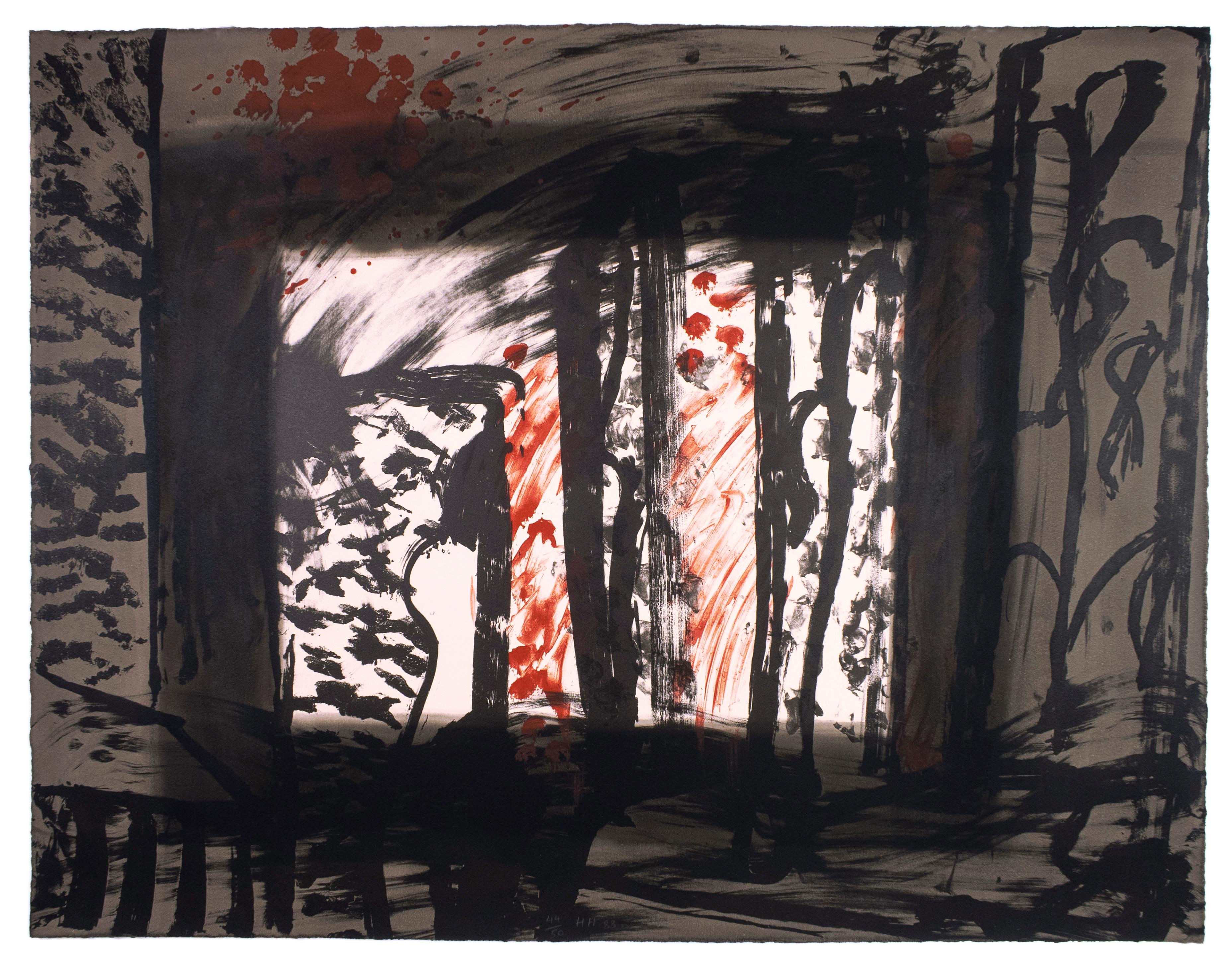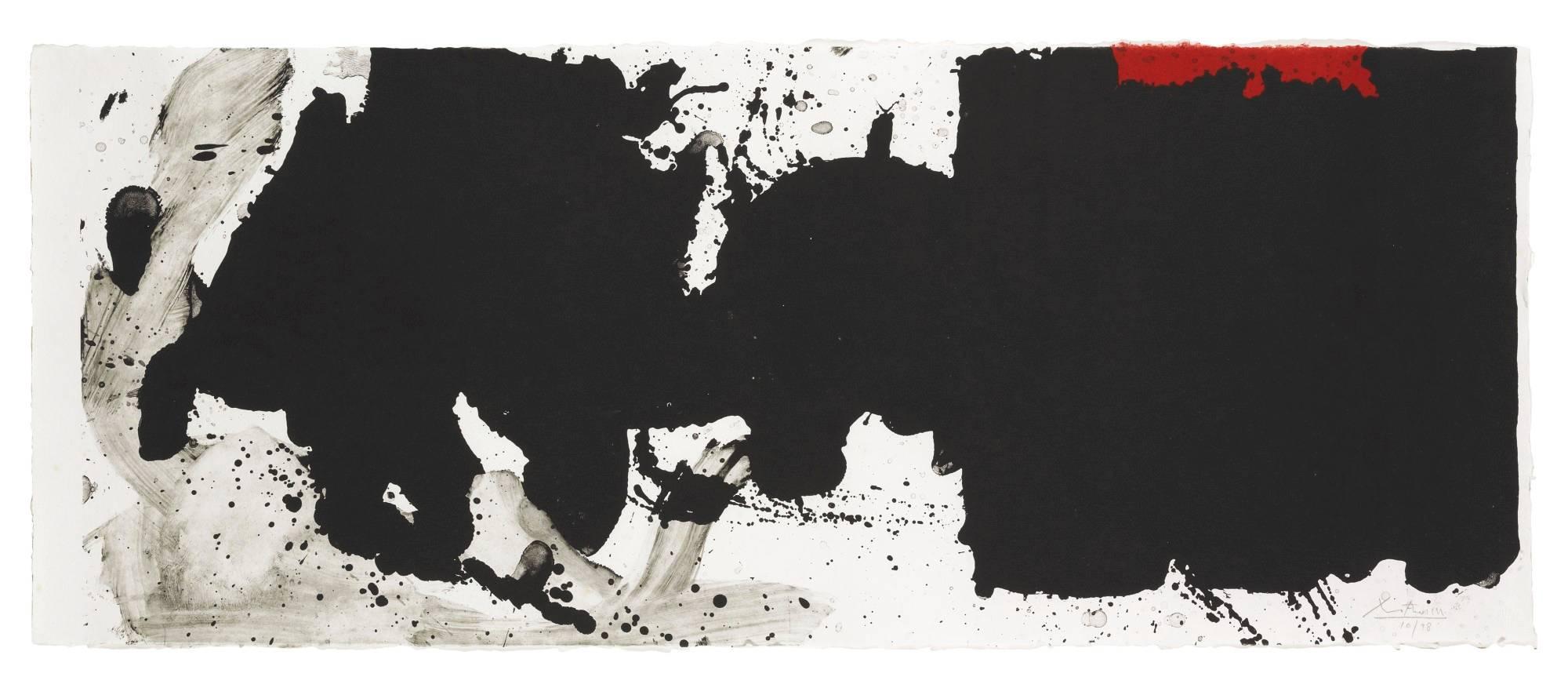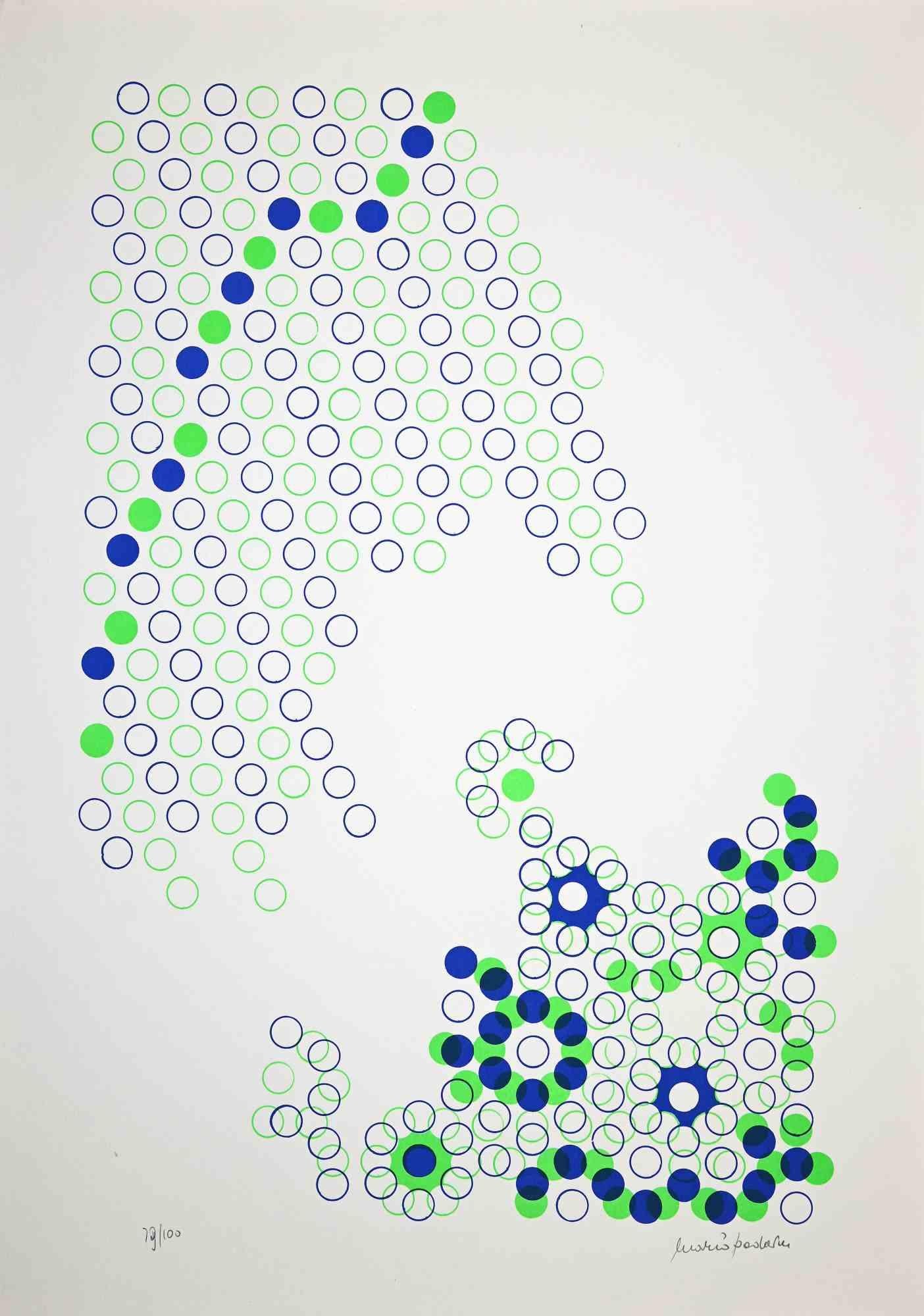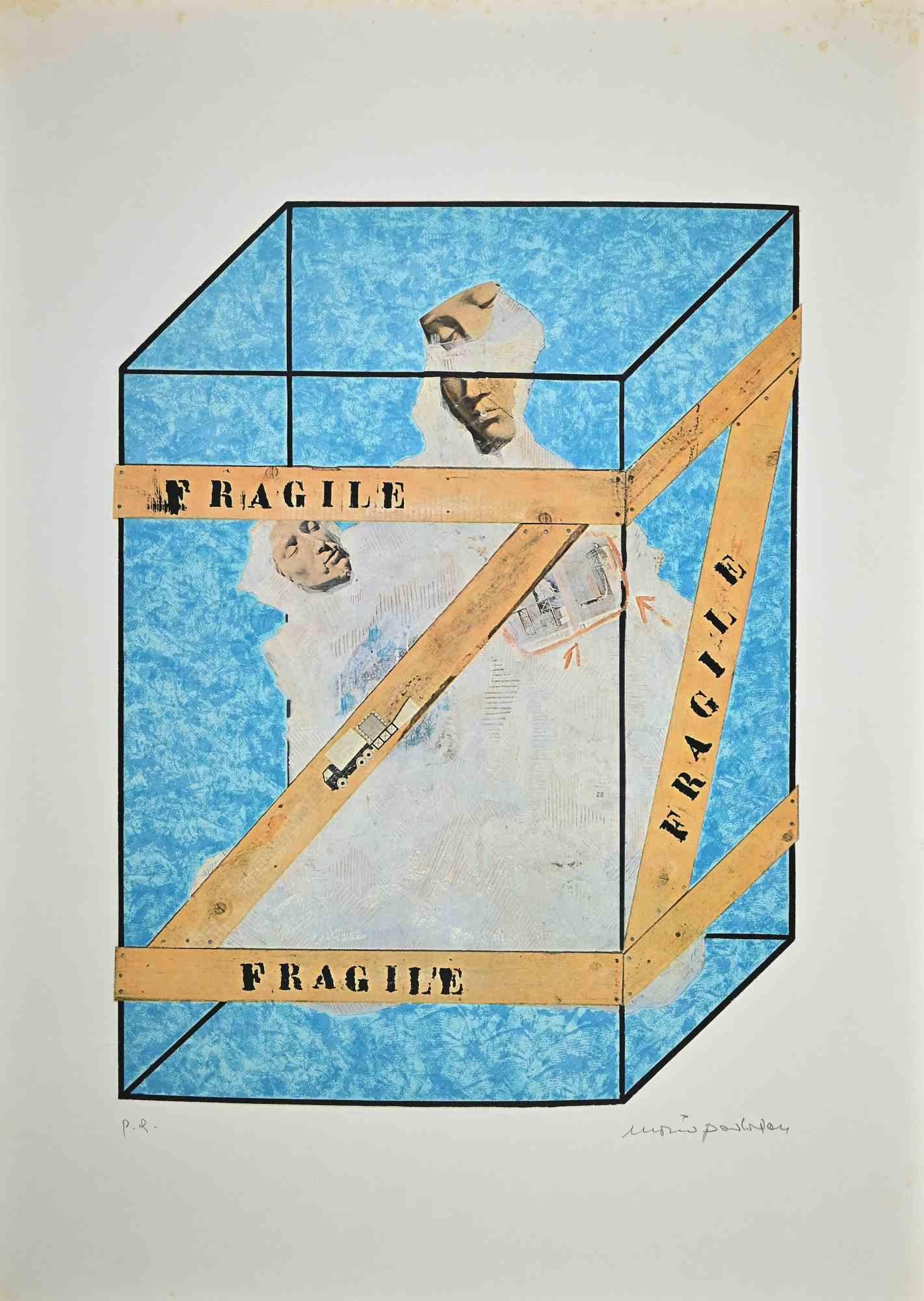Frank StellaUntitled1991
1991
About the Item
- Creator:Frank Stella (1936, American)
- Creation Year:1991
- Dimensions:Height: 23 in (58.42 cm)Width: 24 in (60.96 cm)
- Medium:
- Movement & Style:
- Period:
- Condition:One crease to the image, unobtrusive and supported by the support board.
- Gallery Location:Fairlawn, OH
- Reference Number:
Frank Stella
Frank Stella was one of the central figures in postwar American art. A proponent of minimalism and non-representational abstraction, Stella was a painter, printmaker and sculptor.
A native of Massachusetts, Stella attended Phillips Academy in Andover and earned a BA from Princeton, where he studied art and color theory with Josef Albers and Hans Hofmann. Stella frequented New York galleries as a student and was intrigued by the work of Jackson Pollock and Franz Kline, both of whom were at the height of their creative powers in the late 1950s.
After moving to New York in 1958, Stella gravitated toward the geometric abstraction and restrained painting style of Barnett Newman and Jasper Johns.
Johns’s flat, graphic images of common objects such as targets and flags prompt viewers to question the essential nature of representation and whether these pictures are really paintings or simply new iterations of the items themselves. Stella pushed Johns’s reasoning further, considering paintings on canvas as objects in their own right, like sculptures, rather than representations. This led him to reject certain formal conventions, eschewing sketches and often using nontraditional materials, like house paint.
In 1959, Stella created his “Black Paintings,” series, in which bands of black paint are separated by thin, precise stripes of bare canvas. At a time when contemporary painting was all about wild gestures, thick paint and formal abandon, these pieces created a sensation. That same year, Stella's work was included in the exhibition "Sixteen Americans" at the Museum of Modern Art in New York, and he joined the roster of artists represented by Leo Castelli Gallery. In 1960, he began introducing color into his work and using unconventionally shaped canvases to complement his compositions.
In his “Eccentric Polygon” series, from 1965 and ‘66, Stella embraces asymmetry and bold color, creating forms delineated by painted fields and by the edges of the canvas. This series was followed by the 1967–70 “Protractor” series, characterized by colorful circles and arcs. Named after the ancient cities whose circular plans Stella had noticed while traveling in the Middle East during the 1960s, these works usually comprised several canvases set flush against one another so that the geometric figures in each section came together in a larger, more complex whole.
Also in the mid-1960s, Stella started exploring printmaking, initially working with Kenneth Tyler, of Gemini G.E.L., and later installing printing equipment in his own studio. In 1968, he created the “V” series of lithographs, which included the print Quathlamba I. Following a solo exhibition at the Museum of Modern Art in 1970, Stella began working in three dimensions, adding relief elements to paintings, which could almost be considered wall-mounted sculptures.
Stella’s 1970–73 “Polish Village” series was inspired by documentary photos and architectural drawings of Polish synagogues that had been destroyed by Nazis during World War II. The resulting works — composed primarily of paint and cloth on plywood — are more rugged and less polished than his previous series.
Herman Melville's Moby Dick was Stella's muse for a series of three- dimensional works he created in the 1980s in which waveforms, architectural elements and Platonic solids play a prominent role. During this period, Stella embraced a new, exuberant style that is exemplified in "La Scienza della Fiacca."
In 1997, the artist oversaw the creation of the Stella Project, a 5,000-square-foot work inside the Moores Opera House at the University of Houston. A large free-standing sculpture by Stella stands outside the National Gallery of Art in Washington, D.C.
Stella’s work is in the collections of numerous important museums around the world, including New York’s Museum of Modern Art and Metropolitan Museum of Art; the Menil Collection, in Houston; the Hirshhorn Museum and Sculpture Garden, in Washington, D.C.; and the San Francisco Museum of Modern Art. He was awarded the National Medal of Arts by President Obama in 2009, and was given the Lifetime Achievement Award in Contemporary Sculpture by the International Sculpture Center in 2011.
Find original Frank Stella art for sale on 1stDibs.
- ShippingRetrieving quote...Ships From: Fairlawn, OH
- Return PolicyA return for this item may be initiated within 10 days of delivery.
- The Season's EncounterBy Mark TobeyLocated in Fairlawn, OHThe Season's Encounter Signed, dated and numbered in the lower margin Edition: 20 (16/20) Signed, dated and numbered in the lower margin Condition: Mint, f...Category
1960s Abstract Abstract Prints
MaterialsLithograph
- untitledBy Rebekah WilhelmLocated in Fairlawn, OHSigned, titled, dated & numbered verso An example of a photo-lithograph created on an aluminum plate.Category
2010s Abstract Abstract Prints
MaterialsLithograph
- Le vent et l'eauBy Jean DubuffetLocated in Fairlawn, OHLe vent et l'eau Signed, dated, titled and numbered in the lower margin (see photos) Edition: 10 (see photo) There were also 25 impressions with the typeface caption of the title below the image From: Eaux, pierres, sables (Wayer, Stones and Sand) Portfolio From the series Phenomena, Portfolio 10 This No. 3 from Portfolio Eaux, pierres, sables Edition: 10 (7/10), there were 25 other impressions with typeface inscriptions below image Other impressions can be found in the following museum collection: An unsigned impression is in the collection of Centre Pompidou, Paris, with the typeset title caption below Accession No. AM 1976-1118 (3) A signed impression is in the Metropolitan Museum of Art From the MMA entry: "Edition without typography printed...Category
1950s Abstract Abstract Prints
MaterialsLithograph
- untitledBy Garo Zareh AntreasianLocated in Fairlawn, OHSigned and dated in pencil lower right; Annotated: Artist's Proof in pencil lower left; printer's chop mark lower right Edition: 18 impressions and 2 ar...Category
1980s Abstract Geometric Abstract Prints
MaterialsLithograph
- Untitled (for the journal, XX Siécle)By Hans HartungLocated in Fairlawn, OHUntitled (for the journal, XXe Siécle) Color lithograph on wove paper, 1973 Unsigned (as issued) From: XXe Siecle,, December 1973, No. 41 Published by G. di San Lazzaro for A. Maeght, Paris Printed by Mourlot, Paris Edition 3000 (There was also a signed edition of 75 on larger paper) Catalogue raisonné: Subsequent to Schmücking Condition: Excellent Image/Sheet size: 12 1/4 x 9 1/2 inches "Hans Hartung B. 1904, LEIPZIG, GERMANY; D. 1989, ANTIBES, FRANCE Hans Hartung was born on September 21, 1904, in Leipzig, Germany. He cultivated interests in philosophy, astronomy, music, and religion at a young age before he turned to painting. Early in his career he found inspiration in the works of Rembrandt van Rijn and Francisco de Goya, and later influences included Lovis Corinth, Oskar Kokoschka, Emil Nolde, and Max Slevogt. At just 17, Hartung began to experiment with abstraction, synthesizing the graphic techniques of his artistic models...Category
1970s Abstract Abstract Prints
MaterialsLithograph
- Derriere Le Miroir-Page 6-7By Alexander CalderLocated in Fairlawn, OHDerriere Le Miroir-Page 6-7 Color lithograph, 1973 Unsigned (as issued) From: Derriere Le Miroir, No. 201, January 1973 Publisher: Maeght Editeur, Paris Printer: L’Imprimerie Arte, Adrien Maeght Edition: Large (unspecified) There is also a deluxe edition of this issue of DLM, signed and numbered on the justification page, edition 150 Condition: Fresh colors a few spots of foxing near the centerfold, appropriate to it's age Sheet/Image size: 15 x 22 inches Derriere le Miroir (Behind the Mirror) The art...Category
1970s Abstract Abstract Prints
MaterialsLithograph
- Derriere le Miroir Cover - Vintage Lithograph by Alexander Calder - 1968By Alexander CalderLocated in Roma, ITDerriere le Miroir Cover is an original artwork realized by Alexander Calder in 1968. Original mixed colored lithograph. The artwork was th...Category
1960s Abstract Abstract Prints
MaterialsLithograph
- Woman with Corset and Long HairBy Willem de KooningLocated in New York, NYPrinter: Hollanders Workshop, New York Publisher: Knoedler, New York Edition size: 61, plus proofs Catalogue Raisonné: Graham 17 Signed, dated, and numbered inpencil, lower marginCategory
1970s Abstract Expressionist Abstract Prints
MaterialsLithograph
- Sand Howard Hodgkin abstract sepia black and white earth tone painting printBy Howard HodgkinLocated in New York, NYAbstract, large scale earth toned red, black, taupe and grey scene with dynamic lines, shapes and hand painted brushstroke texture. This dramatic Howard Hodgkin work is ideal for dis...Category
1980s Abstract Abstract Prints
MaterialsWatercolor, Lithograph
- Black with No Way OutBy Robert MotherwellLocated in London, GB15 x 38 ins (38.1 x 96.5 cms) Edition of 98 Signature:Signed "Motherwell" in pencil lower right Inscriptions:Numbered in pencil lower right; workshop chop mark lower right; work...Category
1980s Abstract Expressionist Abstract Prints
MaterialsColor, Lithograph
- Fluo Composition - Original Lithograph print by Mario Padovan - 1970sBy Mario PadovanLocated in Roma, ITFluo Composition is an original colored lithograph realized by Mario Padovan in the 1970s . Hand-signed in pencil on the lower right. Numbered in pencil on the lower left. Edition ...Category
1970s Abstract Abstract Prints
MaterialsLithograph
- Fragile - Lithograph print by Mario Padovan - 1990sBy Mario PadovanLocated in Roma, ITFragile is an colored serigraph realized by Mario Padovan in the 1990s . Hand-signed in pencil on the lower right. Artist proof. Good conditions. This artwork represents a typica...Category
1970s Abstract Abstract Prints
MaterialsLithograph
Recently Viewed
View AllRead More
Get to Know the Artists Who Led the Op Art Movement
In the 1960s and '70s, the hypnotic creations of Op artists went mainstream and influenced the look of pop culture.
Welcome (Back) to the Wild, Wonderful World of Walasse Ting
Americans are rediscovering the globe-trotting painter and poet, who was connected to all sorts of art movements across a long and varied career.

